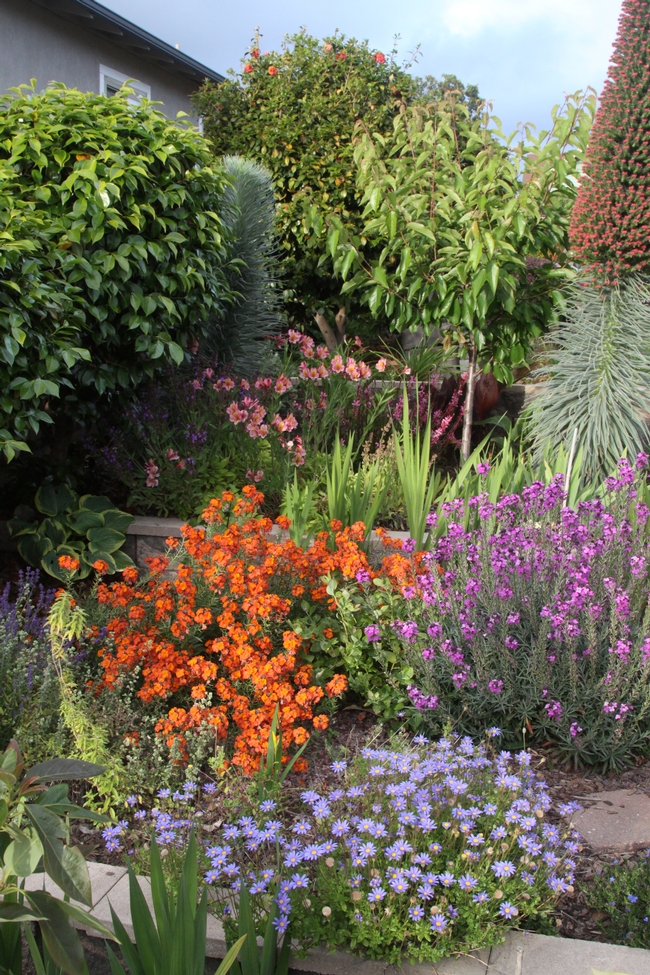[Originally published as "Managing Weeds in Landscapes" published in the Fall 2018 issue of the Retail Nursery and Garden Center IPM News.]
Nurseries and garden centers often sell a wide range of plants for use in gardens and landscapes. As a consumer, you may manage a complex array of different landscape plantings, including woody trees and shrubs, woody ground cover beds, annual flower beds, herbaceous perennial beds, and mixed plantings. This complexity often makes weed management difficult. An integrated approach is the most economical and efficient way to control weeds, so knowing strategies for managing weeds in a variety of landscapes can help.
Woody Trees and Shrub Beds
Control perennial weeds before planting, although weed control can also be done after planting. Densely planted areas will reduce weeds. Geotextile (landscape) fabrics rather than black plastic used with a shallow layer of mulch will keep weeds from emerging. If you mulch without a geotextile base, the mulch layer must be thicker to prevent weed emergence.
If needed, you can use a preemergence herbicide to control annual weeds and supplement with hand weeding and spot applications of postemergence herbicides for weeds that are not well-controlled by hand weeding, such as perennial grasses.
Woody Ground Cover Beds
Mature, woody ground cover beds should exclude most weeds; however, when ground cover is just establishing, weed growth is likely. Perennial weeds must be controlled before planting, although perennial grasses may be selectively controlled after planting with a grass-selective herbicide like sethoxydim (Grass-Getter). Annual weeds may be controlled with mulch plus a preemergence herbicide but rooting of stolons in new plantings may be affected. You will need to supplement with some hand weeding.
Annual Flower Beds
A dense planting in annual flower beds will help shade out and compete with many weeds. Flower species should be carefully selected for weed management compatibility. Periodic cultivation at 3- to 4-week intervals and between flower beds plant rotations will also suppress weeds. Perennial weeds must be controlled before planting. Annual weeds can be controlled with mulches, preemergence herbicides, frequent cultivation, and/or hand weeding. Control perennial grasses with grass-selective herbicides like clethodim, sethoxydim, or fluazifop. Avoid nonselective herbicides in annual flower beds after planting.
Herbaceous Perennial Beds
Weed management options in herbaceous perennial beds are similar to those for annual flowers, except that it is more important to eradicate perennial weeds as there will be no opportunity to cultivate or renovate the bed for several years; and fewer species are included on herbicide labels. Geotextiles may be used in these types of plantings. Manage weeds with mulches and supplement with hand weeding. If needed, use preemergence herbicides after hand weeding.
Mixed Plantings of Woody and Herbaceous Plants
Weed management in mixed plantings is complex because of the diversity of species. Different areas of the bed could receive different weed treatments. Site preparation is critical because post-plant herbicide choices are few. Plant the woody species first and control perennial weeds in the first two growing seasons, then introduce the herbaceous species. Plant close together to shade the soil. Group plants within the bed that will receive similar weed management programs.
In most landscape situations, herbicides should not normally be needed by home gardeners. Mulching, removal by hand, and proper irrigation (pattern and amount of water) are sufficient in most cases. Find more information in the newly revised Pest Notes: Weed Management in Landscapes.
